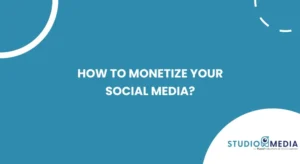There are various types of video production, each serving unique purposes and catering to different audiences. Whether it’s capturing the essence of a live event, educating employees, or launching a new product, understanding the different types of video production can help you choose the right approach to meet your objectives.
In this guide, we will explore a comprehensive range of video production types, detailing their specific uses and advantages.
Different Types of Video Production
1. Corporate Videos
Corporate videos are used to communicate with your target audience, stakeholders, and employees. They are an excellent tool for building brand identity and conveying your company’s values, vision, and goals.
These videos can vary in style from formal executive messages to more casual staff introductions. Corporate videos are also an essential part of internal communications, training, and corporate announcements. They help in aligning the workforce with the company’s strategic goals and maintaining a consistent message across all levels.
2. Advertising Videos
Advertising videos are designed to promote products or services. They aim to attract attention, evoke emotions, and persuade viewers to make a purchase or engage with a brand.
These videos are often high-energy and highly creative, incorporating compelling visuals and sound to create a memorable viewer experience. They can be found on television, online platforms, and social media, playing a crucial role in modern marketing strategies. Effective advertising videos are not only informative but also entertaining and unique, setting the brand apart from its competitors.
3. Training Videos
Training videos are educational tools that help to improve the viewer’s skills or knowledge, particularly in a work-related context. These videos are designed to deliver effective training in a clear and engaging way.
They are an efficient method to ensure consistent training is provided to employees across different locations. Training videos can cover a variety of topics, from software tutorials to customer service skills and compliance training. They often include demonstrations, animations, and quizzes to facilitate learning and retention.
4. Documentaries
Documentaries are non-fiction videos that provide a factual report on a particular subject. They are often educational and can provide deep insights into a topic, person, or situation. Documentaries are powerful tools for storytelling, combining compelling narrative with factual accuracy.
They can explore social issues, historical events, or personal stories, aiming to enlighten and inform while often also inspiring action and awareness. Documentary filmmakers use a mix of interviews, archival footage, and narrative commentary to build a comprehensive view of the subject.
5. Music Videos
Music videos are made to market music and enhance the artist’s vision. They often tell a story or convey messages through choreography and visually engaging sequences that complement the music.
Music videos can vary widely in style and content, from simple performance videos to complex narrative stories or dance sequences. They are a vital part of an artist’s brand and a powerful marketing tool that can increase an artist’s visibility and fan engagement across global platforms.
6. Live Event Videos
Live event videos capture the essence and dynamics of an event as it happens. This type of video is crucial for promoting and sharing the atmosphere of concerts, conferences, or sports events.
They provide those who cannot attend in person a chance to experience the event live or through recorded coverage. These videos are also used for archiving memorable events and can be repurposed into promotional materials or highlights reels for future marketing campaigns.
7. Testimonial Videos
Testimonial videos feature clients or customers praising a company or its products. These are powerful marketing tools because they come from a genuine customer perspective and build trust and credibility.
By showcasing real-life success stories, testimonial videos help potential customers see the practical benefits of a product or service. They can be particularly effective when integrated into product pages, social media, or at points of sale.
8. Social Media Videos
Social media videos are designed to be shared on platforms such as Facebook, Instagram, and Twitter. They are usually short, engaging, and crafted to capture the quick-scrolling user’s attention.
These videos need to be dynamic and visually appealing to stand out in crowded social feeds. Effective social media videos are not only about capturing attention but also driving engagement through likes, shares, and comments, thus expanding brand reach and impact.
9. Educational Videos
Educational videos aim to inform and educate viewers on a wide range of topics in an accessible and often entertaining format. These are widely used in schools, workshops, and online platforms.
Effective educational videos are structured to facilitate learning, incorporating clear objectives, detailed explanations, and engaging visuals. They often include elements such as storytelling, demonstrations, and infographics to help illustrate complex information in an understandable way.
10. Promotional Videos
Promotional videos are used to create buzz around a particular product, service, or event. They are similar to advertising videos but are often more focused on promoting specific aspects or special offers.
These videos aim to generate excitement and anticipation, encouraging viewers to take immediate action, such as attending an event or making a purchase. Effective promotional videos clearly communicate the value and benefits of the offer and include a strong call to action.
11. Animated Videos
Animated videos use vibrant visuals and animations to tell a story or explain a concept. These videos can be particularly effective when dealing with abstract ideas or when wanting to add a layer of creativity and fun.
Animation allows for flexibility in storytelling and can be tailored to suit any target audience, from children to professionals. Animated videos are often used for educational purposes, advertisements, and online content, providing a visually engaging way to capture and maintain viewer interest.
12. Industry Specific Video
Industry-specific videos are tailored to a particular industry’s needs and are designed to address the concerns and interests of that sector. They could be promotional, informational, or educational.
Such videos must resonate with industry-specific audiences and are crafted with a deep understanding of the industry’s standards, challenges, and audience expectations. Whether it’s a medical, educational, technology, or fashion industry, these videos help businesses in those sectors communicate effectively with their targeted demographic.
Conclusion
Video production is a dynamic and versatile tool that can transform how businesses connect with their audiences. By choosing the appropriate type of video—be it a corporate insight, a compelling documentary, or a vibrant animated piece—you can significantly enhance your messaging and audience engagement.
Each style of video production offers unique benefits and can be tailored to meet specific needs and goals. We hope this exploration of the different types of video production inspires you to consider how video can be integrated into your communication and marketing strategies.
Feel free to share this guide with colleagues or on social media to help others understand the power and versatility of video content in today’s fast-paced digital landscape.







